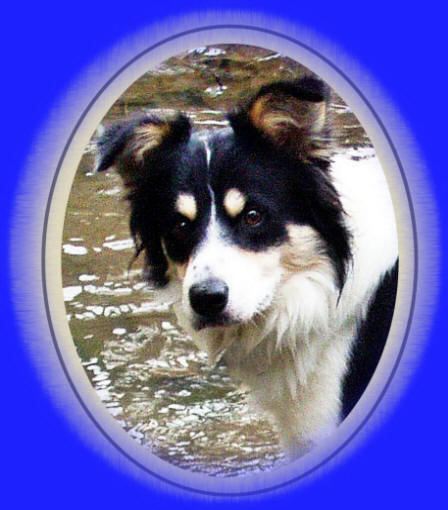

![]()
MACH15, CH. ADCH, NATCH Topshelf Pizzazz UD, TDX, HSAs, OF (Ariba) - Dam
and
MACH4 ADCH
FDCH
Hob Nob Ketch The Wave (Surf) - Sire
![]()
"Chi"
His registered name is:
Hob nob power by night flight
His new owner is Karin Haderly
Chi,
pronounced Chee.
It is a chinese word that has been defined variously as :
The natural energy of the
universe.
a synergistic near perfect union of mind, body, and spirit.
Energy.
Motion of energy.
Life force.
![]()
Click on the BC picture to see an awesome run of Chi and Karin in Open JWW!!!
![]()
 Click
on BC picture to see an awesome run of Chi and Karin in Exc. JWW! 5/2010
Click
on BC picture to see an awesome run of Chi and Karin in Exc. JWW! 5/2010
![]()
Cool Agility Photos of Chi
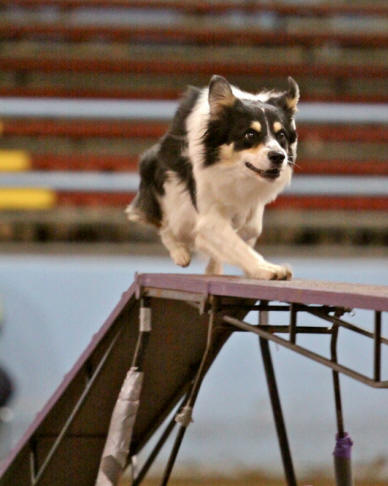
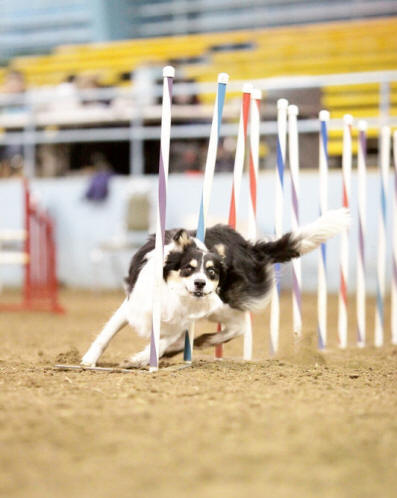
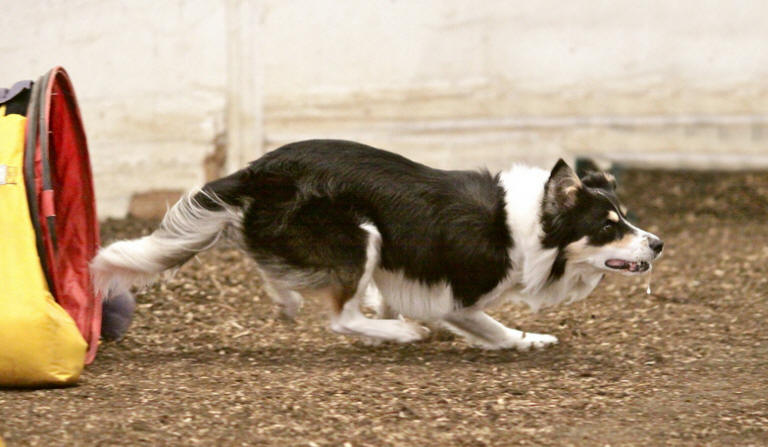
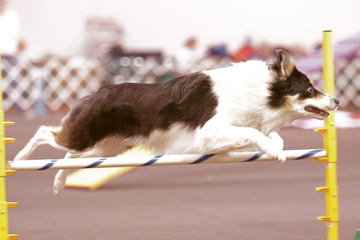
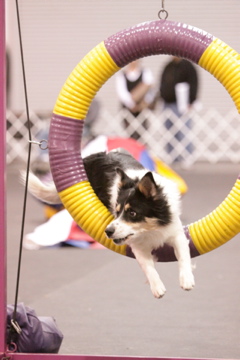
![]()
Chi at Home
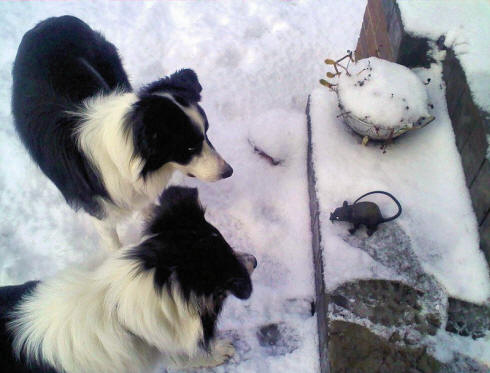
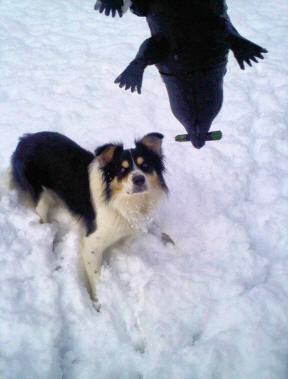
To the Left
Chi at bottom of
picture with brother
Quip at the top
assessing Chi's
favorite toy
The Rat.
Just waiting for the
Rat to move!
To the Right
Chi - "Just bring him down
a little closer."
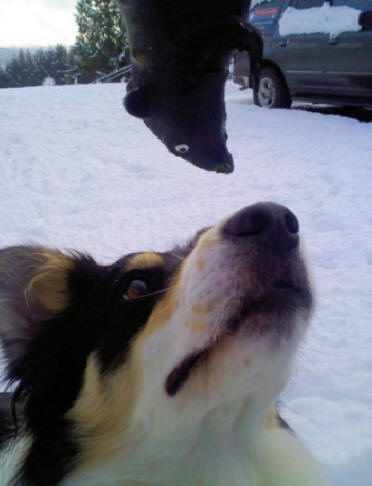
You are mine!!!!
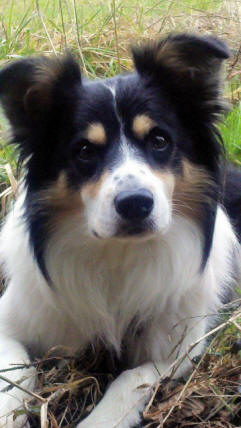
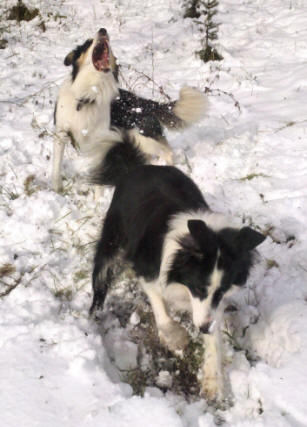
2011 Photos. Left - Handsome Chi. Right - Brother Quip digs while Chi catches in the background.
![]()
Click on Chi's Picture To
The Right To See
The First Year In Review.
![]()
Karin Haderly's MACH Ad in Clean Run with Quip!!!
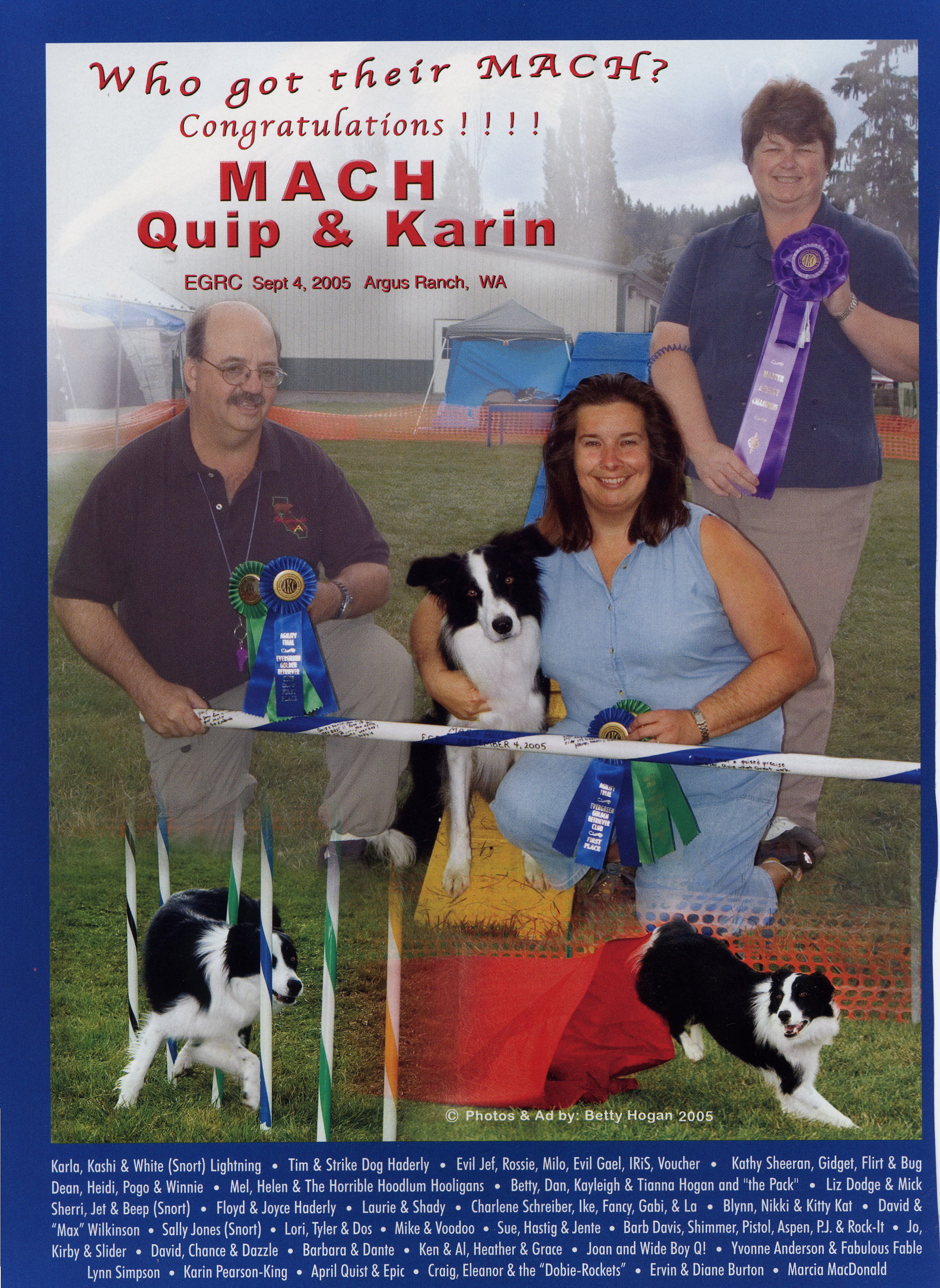
![]()
This is a news article about Karin Haderly that was published on July 10, 2005

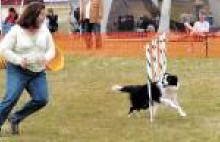
Karin and MACH Hob Nob Quick as a Whip "Quip"
Quip was made for quickness. He's bred to be light on his feet, smooth in his moves and tuned in like radar. No wonder the border collie flows through an agility course like fast-running water. Of course, his human has something to do with it. "It's hard to be accurate when you have a fast dog," said Quip's owner, Karin Haderly of Castle Rock, who dashes along beside him when he competes on agility courses made up of various obstacles. "It's always a different course," Haderly said. "You have to know your dog. You have a fraction of a second" to give the dog each cue he needs.
"I have to be in control of every single twitch of my body," she said, "and
be in the right place on the course at every moment. I can't turn my head; I
can't twitch my finger the wrong way. He responds to every single thing I do."
Haderly, the owner of a local dog-training business called Fido Beta Kappa,
spends her week giving dog obedience lessons and training dogs on the agility
course she has designed on the Haderlys' rural property. Every weekend, she and
Quip, a 6-year-old whose full name is Hob Nob Quick as a Whip, hit the road to
test their skills at agility trials, hoping to qualify for nationals and beyond.
Haderly bonded with dogs as a kid in Portland. She worked her way to Fido Beta
Kappa through a series of challenges not unlike those on an agility course.
She has post-graduate training in hydrogeology, is married to a scientist and
previously worked in hazardous waste cleanup in Kelso and Tualatin, Ore. Layoffs
and a tough commute took their toll, so she shifted full-time to dogs. "I
was teaching obedience classes," she said, and was asked first to assist, then
to take over. "It happened really fast. I started going to lots of seminars."
She racked up more than 700 hours of instruction on dog behavior, dog training
and learning theory, aggression towards people and other animals, agility
training and handling. Haderly passed the lengthy certification test, but
she didn't stop there. "I went to Arkansas --- you aren't going to believe
this --- to train chickens," she said. She worked 160 hours with Marian
Bailey, a former graduate student of celebrated behaviorist B.F. Skinner, and
Marian's husband, Bob, who trains dolphins. The Baileys use "operant
conditioning," connecting a behavior to a reward, to train chickens to recognize
colors and shapes and follow commands. "The chickens had to walk up a
ladder to a platform and walk across a balance beam to another platform. Then
they had to count -- walk two times around a post in the center" before
returning to beam and platform, "turning 180 degrees and going down the ladder
to a table" where they had to "peck a blue bowling pin off the edge. They had to
choose between red and blue," Haderly said. "And they had to do all these
steps on one command: 'Go!' " The Baileys and their chickens "helped me
become a better trainer," Haderly said.
"You can apply those principles to any animal you want. That's what they use at
Sea World with the dolphins, killer whales and sea otters ..." Fido Beta
Kappa is all about operant conditioning. "I like helping dogs have a
better lives in the homes that they're in," said the trainer. "We expect
dogs to lie by the hearth and look cute. But boredom is the kiss of death for
dogs. Dogs were bred to do things." Haderly uses a clicker to connect a
treat with a sound in the dog's mind, training the dog to obey commands such as
"Stay," "Heel," "Sit," "Down." Every time the dog follows a command, the owner
snaps the clicker and gives a treat, piling on verbal praise.
People don't realize they're training dogs to do bad things such as bark or beg,
Haderly said. "Jumping --- that's a classic one," she said. "Let's say
you've got a big happy lab, and it jumps up on you. You shove it down, and say,
'DOWN!' "The dog is jumping because he wants attention. It doesn't matter
if it's good or bad. He says, 'Gee, they're touching me, they're talking to me.'
And the next time, he jumps again." Owners must be consistent --- all the
time --- and swift with rewards. "You can't wait until two hours later to say
'Gee that was nice that you didn't jump on Grandma,' "It takes dedication,
and it takes time," Haderly said. Suzanne Megenity, a Longview oral
surgeon, brings her two Swedish valhunds to Haderly's course for agility
training. The low-slung dogs start barking the moment she turns down the
road, Megenity said. "They think this is the best place in the world." As
Haderly went to put Quip in the Jeep, Megenity took the opportunity to praise
the trainer. "It's phenomenal to have her in our area," she said. "In
other parts of the country, people will drive hours to get to the quality of
teaching she provides."
Dogs and owners converge on
the Agility Trials in Vancouver by 7:30 in the morning on June 25, setting up
tents while American Kennel Club volunteers bustle around. It's a dog's
world. African basenjis, long-haired Briards, upright standard poodles,
malamutes, lots of border collies like Quip. A woman's T-shirt reads "Wiener
Dogs Rule." Haderly leaves Quip resting in his carrier while she visits with
friends. She'll be here for hours this weekend, waiting for four or five races
that will take between 40 and 50 seconds each.
Dogs compete, one by one, on courses with up to 20 obstacles, including jumps,
hoops, tunnels, an A-frame, a teeter-totter, a table where the dogs have to lie
down for five seconds during the heat of the race, and weave poles, upright
flexible plastic sticks that dogs race through, slalom style. Each race
has a different sequence, with obstacles marked by numbered cones. Trainers get
10 minutes to walk the course and memorize it. They move through it time and
again, mouthing commands and gesturing just as they will when they urge their
dogs from obstacle to obstacle. "I work from Quip's perspective," Haderly
said, "to see what he sees. ... I put it in my muscle memory." She's
especially mindful of "traps," places where it's logical for dogs to proceed but
they're not supposed to. It's up to the trainer to cue the dog away from the
trap to the actual next step. If the human is a split second off, and the dog
races through the trap, it counts as a fault. It's also a fault if a dog
misses an obstacle, skips a weave pole, doesn't touch the yellow stripe at the
bottom of the run or A-frame.
Because Quip has risen to the excellent level, a single fault disqualifies him.
He can only earn points that will help him achieve champion status and go on to
higher levels if he follows the course fault-free, at top speeds. "He runs 22
feet per second," said Haderly. "The little dog handlers have more time, if a
dog's headed the wrong way, to make a correction." She paused. "But you have to
learn to handle the dog you have." It's not easy. Last year Haderly broke
her foot during a race and was in a cast for six weeks. The pair had qualified
for national championships but couldn't go. Neither the injury nor the
disappointment dampened Haderly's fervor. She strides off to get Quip.
They stand while their marker dog, the one just ahead in the lineup, runs the
course. "I use that to motivate him," Haderly said earlier. "I say, 'Oooh,
time to run the course, want it?' He'll have a faster time because he's all
wound up." Now it's their turn. Quip's a very earnest dog, running fast
but carefully, eyes swiveling from Haderly to the course and back again. The
electronic timer that records each dog's time in seconds and fractions of
seconds shows that he's faster than any dog so far ... and he's nailing
everything. Then, as he shoots forward from the A-frame, Haderly is just
behind him and Quip flies ahead to the trap. She calls out to stop him but he
goes through it. They're disqualified. No reaction; she just brings him to
the right spot and he finishes the course. When he's done he leaps into
Haderly's arms. "What a boy!" she yells. "There are so many myriad little
things that go into laying down a perfect run," she said later. "It's hard to be
perfect. And no matter what happens, I still celebrate every run, clean or not,
with Quip." Later that day, Quip won the Excellent B Jumpers with Weaves
with a time under 26 seconds. "We beat the second-place dog by just 0.01
seconds, so thank goodness for the electronic timers," Haderly said.
On Sunday, "we started our day by laying down a smoking fast clean run on the
International Jumpers With Weaves class for another win," she said. Their
two next runs on Sunday had minor errors, "but I was happy with them because the
courses were tough," she said. On one, top local dogs and handlers disqualified
right and left, she said. "Quip and I had an incredible run on it, making it
through all the difficult portions, but on something simple, I took one single
step too many ... and pushed him past the correct entry ... It fries me to screw
up something that simple, but that's the way agility goes." Maybe Quip
will qualify for nationals once again. In the meantime, dog and human will
follow the circuit. "The connection between you and the dog is incredible when
it goes right," Haderly said. "I get a rush when I run him. .. It's an
unbelievable feeling."
![]()